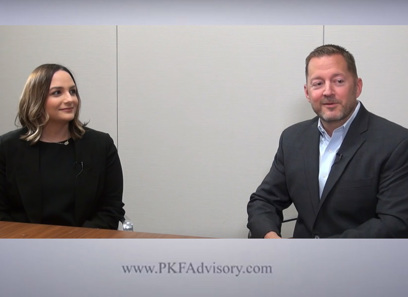The Impact of Economic Factors on the M&A Outlook: What You Need to Know for 2025
The Impact of Economic Factors on the M&A Outlook: What You Need to Know for 2025
Blog Article
The Function of Mergers and Acquisitions in Shaping Sector Patterns and Advancements
Mergers and acquisitions have increasingly come to be an essential system for organizations seeking to navigate the intricacies of contemporary markets. By pooling sources and experience, business can not only improve their competitive side however likewise militarize advancement through joint harmonies. As sectors face fast technological improvements and changing consumer needs, recognizing the implications of M&A strategies supplies useful understandings right into future trends. Yet, the inquiry remains: exactly how do these strategic actions genuinely influence the trajectory of entire sectors?
Comprehending M&A Dynamics
Mergers and acquisitions (M&A) frequently work as crucial techniques for companies looking for development, competitive advantage, or market consolidation. Comprehending the dynamics of M&A is vital for both specialists and stakeholders in navigating the complicated landscape of corporate deals. M&A processes normally entail numerous phases, consisting of target identification, due diligence, settlement, and combination, each bring its very own obstacles and threats.
The inspirations behind M&A can differ significantly; companies may pursue these methods to access brand-new markets, get cutting-edge modern technologies, or accomplish functional harmonies. In addition, adjustments in governing atmospheres and financial conditions can affect M&An activity, triggering companies to adjust their methods appropriately.
Effective execution of M&A purchases calls for a detailed understanding of the cultural, economic, and operational ramifications involved. Firms must analyze not just the quantitative elements, such as evaluation and economic performance, but likewise the qualitative elements, consisting of corporate culture and worker sentiment. Ultimately, the capability to successfully take care of these dynamics can establish the success or failing of an M&A campaign, highlighting the demand for tactical planning and informed decision-making throughout the procedure.
Influence on Market Competition
The outcomes of mergings and procurements on market competitors can be extensive, usually improving market landscapes. When business combine, they often boost their market power, enabling them to establish costs extra openly and determine terms to consumers and vendors. This raised power can cause reduced competition, as smaller sized players may struggle to complete against the integrated resources and capabilities of the joined entity.
Furthermore, M&An activities can lead to market focus, where fewer firms control the sector. This focus can suppress competition, resulting in greater prices and fewer options for consumers. The competitive effects of mergers and procurements are not globally negative. Sometimes, they can develop effectiveness that benefit customers, such as improved solutions or reduced expenses through economic situations of range.

Innovation Through Partnership
Collaboration in between business can serve as a considerable catalyst for technology, making it possible for companies to take advantage of each various other's strengths and resources. They produce a fertile ground for the advancement of brand-new concepts, items, and technologies when companies combine their knowledge. This synergy typically brings about improved analytic capacities, enabling firms to tackle complex challenges that would be difficult to deal with independently.
Moreover, joint efforts can accelerate the study and advancement procedure. By pooling their technological capabilities and intellectual funding, companies can substantially lower time-to-market for cutting-edge options. This is especially apparent in sectors where fast technical advancements are paramount, such as telecommunications, pharmaceuticals, and infotech.
In addition, partnerships developed with mergings and purchases can foster a culture of development - Mergers and Acquisitions. When employees from different histories and capability collaborated, they add diverse point of views that can motivate creative thinking and cause breakthrough technologies. This collaborative atmosphere not only improves worker morale yet additionally improves retention prices, as individuals feel a lot more involved in a dynamic office
Sector-Specific Trends
Sector characteristics are progressively shaped by sector-specific trends that affect the techniques and results of mergers and acquisitions. Different industries are experiencing one-of-a-kind stress and possibilities, prompting companies to go after M&A as a calculated device to resolve these obstacles.
In innovation, the quick pace of advancement and electronic makeover drives companies to acquire startups to boost their capabilities and broaden their item offerings. Similarly, the medical care industry is experiencing consolidation as organizations seek to enhance functional efficiencies and expand their solution arrays in action to regulatory adjustments and evolving person demands.
The advice durable goods industry is likewise undertaking significant adjustments, with sustainability coming to be an important emphasis. Mergers and purchases are being leveraged to include eco pleasant methods and items, straightening with customer choices and regulative expectations.
In financing, the increase of fintech is triggering standard institutions to get ingenious tech companies to remain competitive and enhance client experiences. These sector-specific patterns not just dictate the nature of M&An activity yet likewise highlight the need for firms to remain active in an ever-evolving market landscape. Comprehending these trends is necessary for stakeholders to prepare for changes and take advantage of possibilities efficiently.
Future Outlook of M&A
A transformative era is on the perspective for acquisitions and mergers, driven by technical developments, regulatory modifications, and shifting customer habits. Business are progressively leveraging information analytics and expert system to identify prospective targets and simplify due diligence processes, improving decision-making performance. This technological combination not only speeds up deal timelines however also enhances the accuracy of assessments.

As consumer choices proceed to progress, specifically in the direction of sustainability and digital involvement, businesses will seek purchases that straighten with these trends. Companies concentrating on digital platforms or green technologies are expected to come to be attractive targets, mirroring a wider sector dedication to thrive and adapt in altering market conditions.
Eventually, the future of M&A will be defined by agility and responsiveness, as companies identify the need of strategic partnerships to remain competitive. The landscape will prefer those that can properly straighten their objectives with arising trends while balancing technological advancements and regulative intricacies.
Final Thought
Mergers and procurements work as catalysts for industry improvement, cultivating development and enhancing competitive dynamics. By facilitating source sharing and competence assimilation, M&A campaigns drive operational efficiencies and increase the growth of brand-new modern technologies. As sectors proceed to progress in reaction to customer needs and market changes, the tactical pursuit of M&A will remain crucial fit future fads and promoting read what he said lasting growth. Highlighting cooperation, these activities will inevitably redefine the landscape of different fields.
As industries grapple with quick technical improvements and moving consumer demands, understanding the effects of M&A techniques provides beneficial insights right into future patterns.Mergers and purchases (M&A) frequently offer as critical approaches for business seeking development, competitive benefit, or market loan consolidation.Moreover, M&An activities can lead to market focus, where fewer companies dominate the market. These sector-specific fads not only determine the nature of M&An activity but additionally highlight the requirement for business to continue to be nimble in an ever-evolving market landscape. As industries proceed to advance in feedback to consumer needs and market changes, the critical pursuit of M&A will you can try here continue to be important in shaping future trends and promoting sustainable development.
Report this page